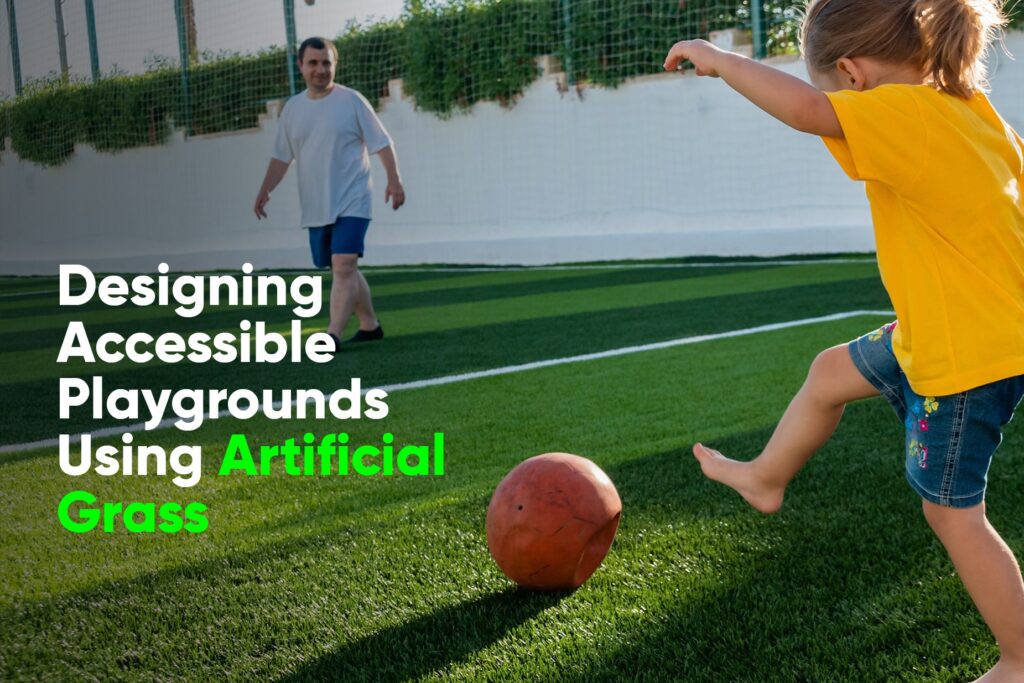Creating Accessible, ADA Compliant Play Areas With Artificial Grass

Playgrounds are more than just swings and slides – they’re vital spaces for children of all abilities to develop social, emotional, and physical skills.
But for children with disabilities, traditional playgrounds can present physical barriers that limit their participation and enjoyment. That’s where artificial grass comes in, offering a unique solution for creating truly inclusive play areas that comply with the Americans with Disabilities Act (ADA).
Why Artificial Grass?
Traditional playgrounds with loose surfaces like gravel or mulch can pose challenges for wheelchairs and other mobility aids.
Artificial grass for residential homes and businesses provides a firm, stable surface that’s easy to navigate. Ensuring children with disabilities can move freely and confidently. Here are some key benefits:
- Accessibility: Artificial grass eliminates trip hazards and uneven surfaces. Making it easier for children with mobility impairments to access and enjoy the playground.
- Inclusivity: By removing physical barriers, artificial grass fosters a more inclusive environment where all children can play side-by-side.
- Safety: The cushioned surface of artificial grass provides a safer play environment for children of all abilities, reducing the risk of falls and injuries.
- Cleanliness: Artificial grass is naturally resistant to dirt, mud, and allergens, creating a cleaner and more hygienic play area.
- Low Maintenance: Unlike natural grass, artificial grass requires minimal maintenance. Saving time and resources for playground administrators.
Designing for Accessibility With Artificial Grass
Creating an ADA-compliant play area with artificial grass requires careful planning and design considerations. Here are some key aspects to keep in mind:
- Surface Consistency: The entire play area, including pathways and play structures, should have a consistent, level surface with no slopes exceeding 5%.
- Firmness and Stability: Choose a high-quality artificial grass product with a firm backing that can withstand wheelchair and mobility aid use.
- Transitions: Smooth transitions between different surfaces, like concrete to synthetic grass, are crucial to avoid trip hazards. Use ramps or beveled edges that comply with ADA specifications.
- Play Equipment Accessibility: Ensure all play equipment is accessible to children with disabilities, with appropriate clearances and features like transfer platforms.
- Sensory Play: Incorporate elements that engage different senses, like tactile surfaces, sound-generating equipment, and accessible swings.
Learn More
Playgrounds shouldn’t leave any child out. Artificial grass creates a level, safe surface for wheelchairs and mobility aids, making play truly inclusive. Call us at 408-317-0931 or send us a message for a free consultation and quote.
We can help you explore your options for ADA-compliant design, whether it’s for a residential turf install or for commercial purposes. Together, let’s build play areas where every child can flourish.
